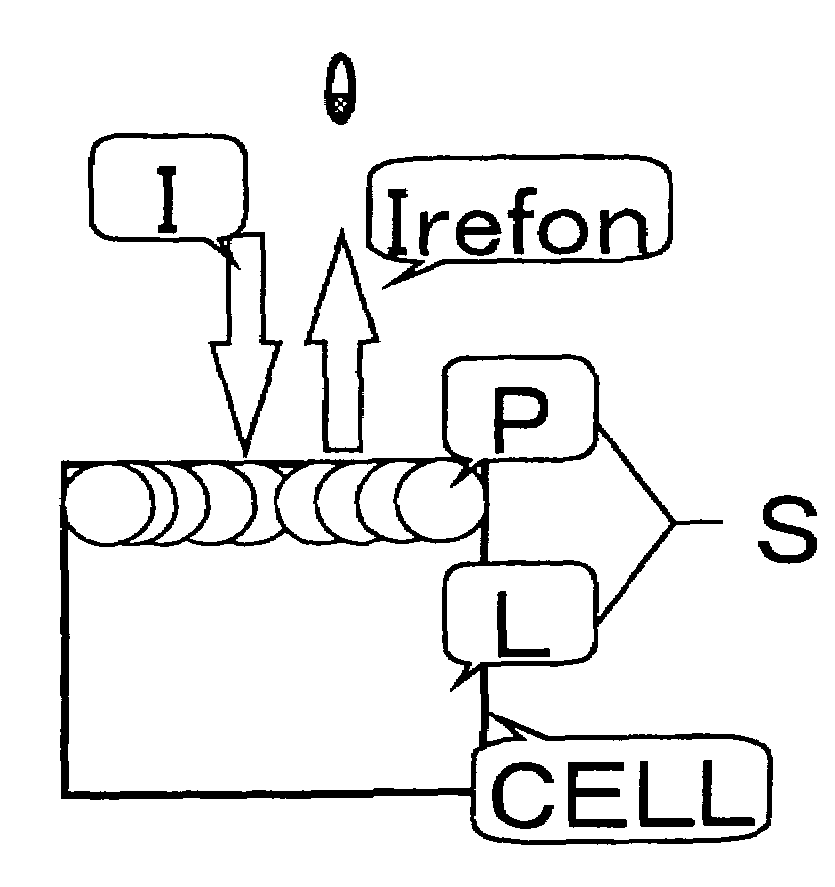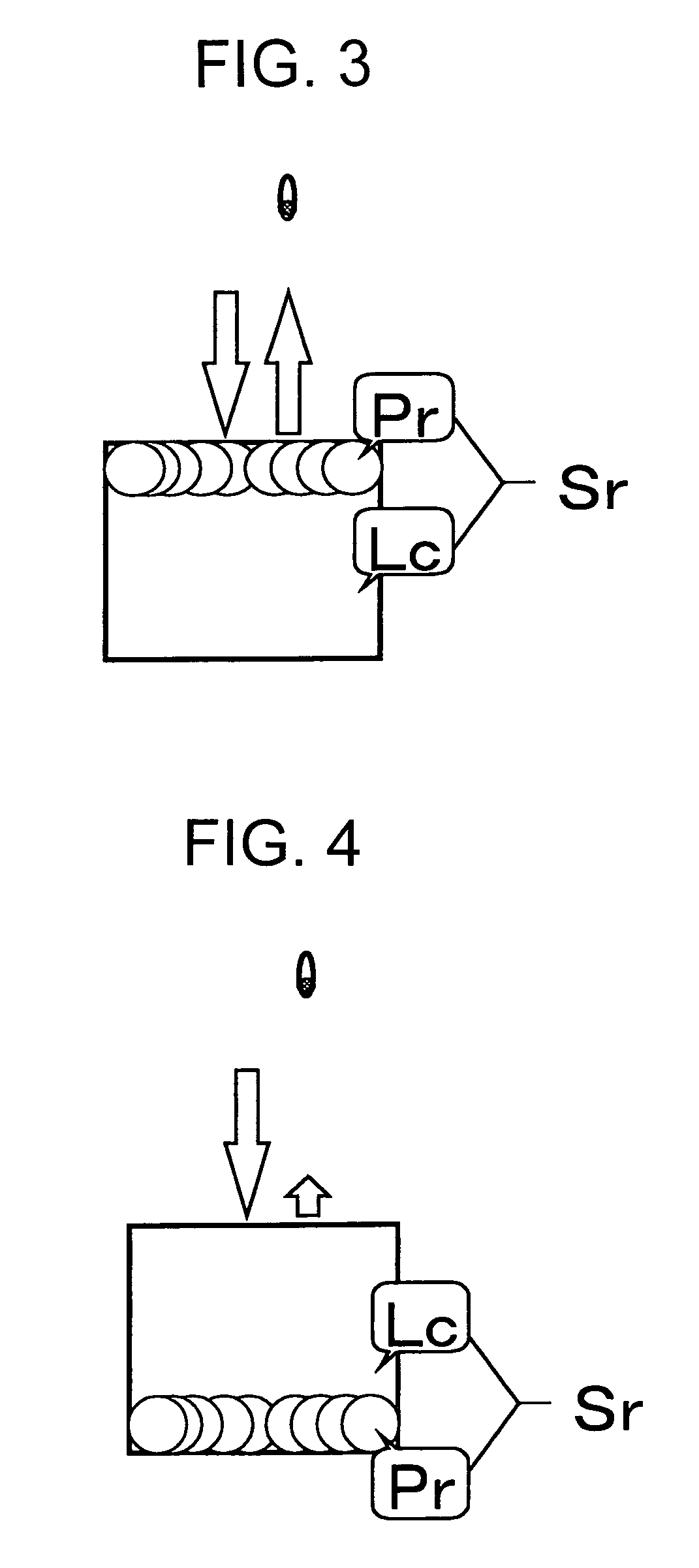Electrooptical device utilizing electrophoresis
- Summary
- Abstract
- Description
- Claims
- Application Information
AI Technical Summary
Benefits of technology
Problems solved by technology
Method used
Image
Examples
first embodiment
A. First Embodiment
[0072]FIGS. 3 and 4 show sectional views of a cell for display of red (R). Although one display panel is composed of a plurality of such cells, constituents such as electrodes and a bulkhead are omitted from being depicted for the sake of simplified explanation. Electrophoretic particles Pr have a characteristic of reflecting the component of red (R). A dispersion medium (Lc) is colored cyan (C) to absorb the wavelength component of the red (R). When applied voltage causes the electrophoretic particles Pr to migrate to an electrode located to the user side, a state shown in FIG. 3 is realized. In this case, the electrophoretic particles Pr can be seen directly by the user, where the red is displayed brightly. On the other hand, when the electrophoretic particles migrate to the electrode opposite to the user, a state shown in FIG. 4 is provided. In this situation, incidence light is subject to absorption of the colored dispersion medium (Lc), reflected by the elect...
second embodiment
B. Second Embodiment
[0076]FIGS. 9 and 10 show sectional views of a cell for display of red (R). For the sake of simplified explanation, constituents such as electrodes and a bulkhead are omitted from being depicted. Electrophoretic particles Pr have a characteristic of reflecting the component of red (R). A dispersion medium (Lk) is colored black. When applied voltage causes the electrophoretic particles Pr to migrate to an electrode located at the user side, a state shown in FIG. 9 is realized. In this case, the electrophoretic particles Pr can be seen directly by the user, where a bright red is displayed. On the other hand, when the electrophoretic particles migrate to the electrode opposite to the user, a state shown in FIG. 10 is provided. In this case, the cell is displayed in a dark red or black, because the incidence light experiences the absorption of the colored dispersion medium (Lk). Although the cell is depicted to have a rectangular section, its shape is not limited to ...
third embodiment
C. Third Embodiment
[0080]FIGS. 15 and 16 show sectional views of a cell for display of red (R). For the sake of simplified explanation, constituents such as electrodes and a bulkhead are omitted from being depicted. Electrophoretic particles Pr have a characteristic of reflecting the component of red (R). A dispersion medium (Lkr) is colored so as to absorb at least a wavelength component of the red (R). When applied voltage causes the electrophoretic particles Pr to migrate to an electrode located at the user side, a state shown in FIG. 15 is realized. In this case, the electrophoretic particles Pr can be seen directly by the user, where a bright red is displayed. On the other hand, when the electrophoretic particles migrate to the electrode opposite to the user, a state shown in FIG. 16 is provided. In this case, the cell is displayed in a dark red or black, because the incidence light experiences the absorption of the colored dispersion medium (Lkr). Although the cell is depicted...
PUM
| Property | Measurement | Unit |
|---|---|---|
| Color | aaaaa | aaaaa |
| Wavelength | aaaaa | aaaaa |
| Electrooptical effect | aaaaa | aaaaa |
Abstract
Description
Claims
Application Information
 Login to View More
Login to View More - R&D
- Intellectual Property
- Life Sciences
- Materials
- Tech Scout
- Unparalleled Data Quality
- Higher Quality Content
- 60% Fewer Hallucinations
Browse by: Latest US Patents, China's latest patents, Technical Efficacy Thesaurus, Application Domain, Technology Topic, Popular Technical Reports.
© 2025 PatSnap. All rights reserved.Legal|Privacy policy|Modern Slavery Act Transparency Statement|Sitemap|About US| Contact US: help@patsnap.com



